Instrumentation
The Chemical and Trace Analysis Lab housed in the Department of Chemistry and Physics has a wide variety of scientific instrumentation available for our students and faculty. Although many facilities and research groups may have thier own equipment, the 20+ pieces of instrumentation in the analysis lab are available to WCU affiliates with no time-of-use charges thanks to funds from the student technology fee. Non-CHPH users and users conducting research are asked to provide their own consumables.
Through our partnership with the WCU Corporation for Entrepreneurship and Innovation, students and faculty in the Chemistry and Forensic Science Programs can provide routine analysis and method development services to outside organizations. The rates will vary depending on the size and scope of the work. Please contact us for more details.
Interested in Forensic Science? Visit our Forensic Science Program's Facilities page to see some of their state-of-the-art instrumentation.
Personnel:
- Chemistry Instrumentation Manager: Mr. Matt Burleson, Instrumentation Specialist
- Forensic Science Instrumentation Manager: Ms. Brittania J. Bintz, Forensic Research Scientist
Our Capabilities
Although individual facilities and research groups may have their own equipment, the Department also maintains a core facility of more than 20 scientific instruments in the areas of Atomic Spectroscopy, Molecular Spectroscopy, Chromatography and Mass Spectrometry, Electrochemistry, and Materials Characterization. Current availabilities and an overview of key instruments are provided below.
Atomic Spectroscopy

The Perkin Elmer PinAAcle 900F flame AA is capable of identifying and quantifying cations (metals) in solution in the ppm to ppb range. It can hold up to 8 hollow cathode lamps for rapid analysis.
AA Quicklinks:
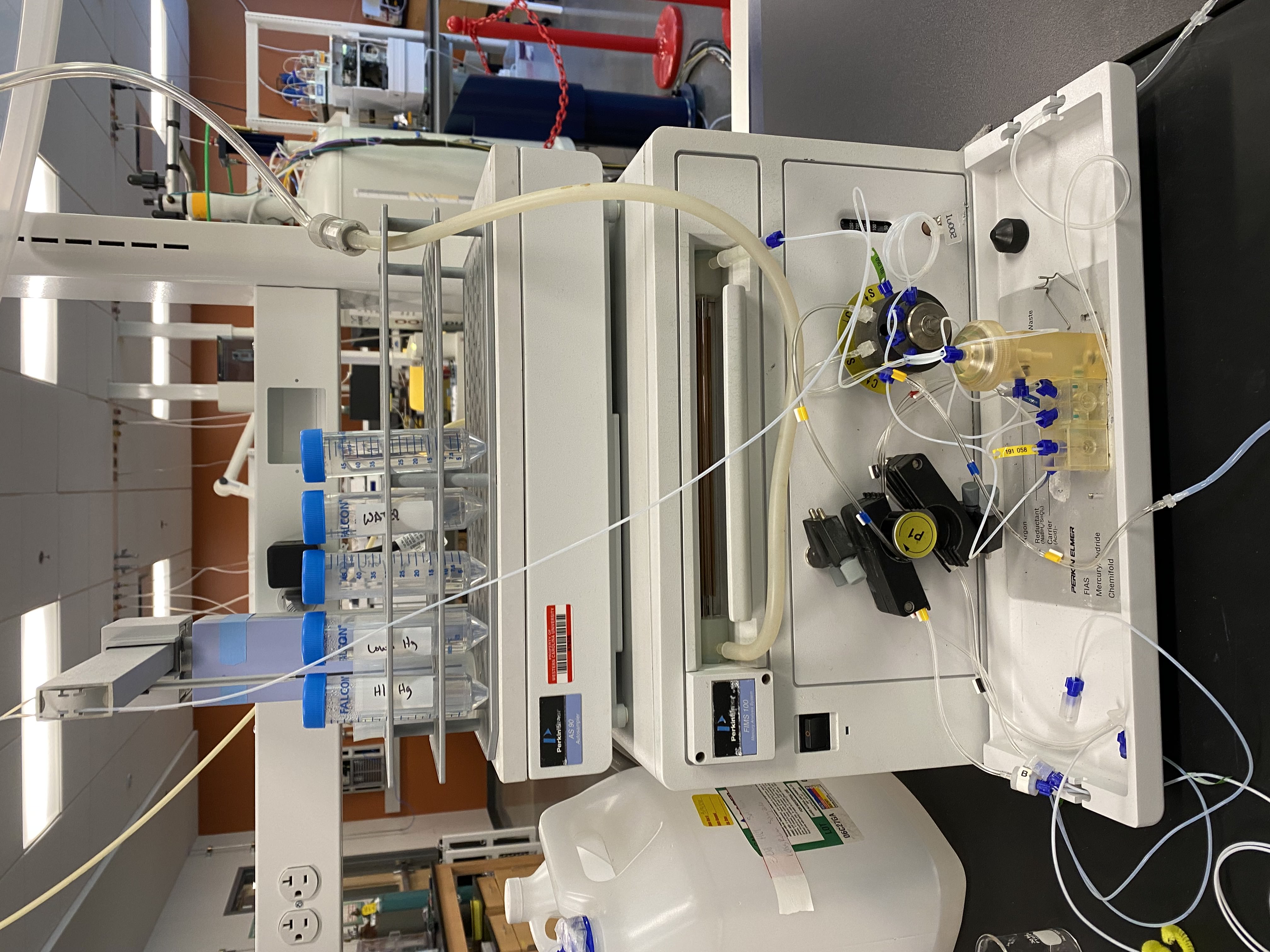
The Perkin Elmer FIMS 100 Mercury Analyzer combines the advantages of flow injection (low carryover and smaller sample sizes) and atomic absorption measurements into a compact mercury analyzer offering a flexible and easy-to-use design.
FIMS Quicklinks:
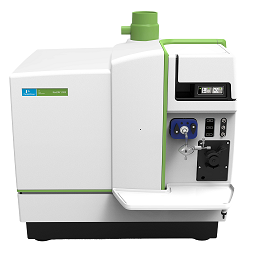
The Perkin Elmer NexION 2000 ICP-MS system features three quadrupoles, three gas channels, and three modes of operation to combine for better interference removal, delivering better detection limits/improved data accuracy.
ICP Quicklinks:
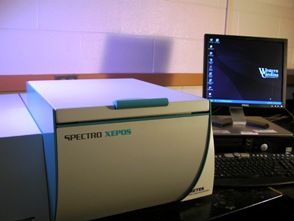
The Spectro XEPOS XRF by AMTEK is able to determine elemental composition of solid samples, covering the entire range of elements between sodium and uranium. The instrument includes a 12-position autosampler.
XRF Quicklinks:
- Please contact the Department of Geology and Natural Resources for information about the XRF.
Molecular Spectroscopy
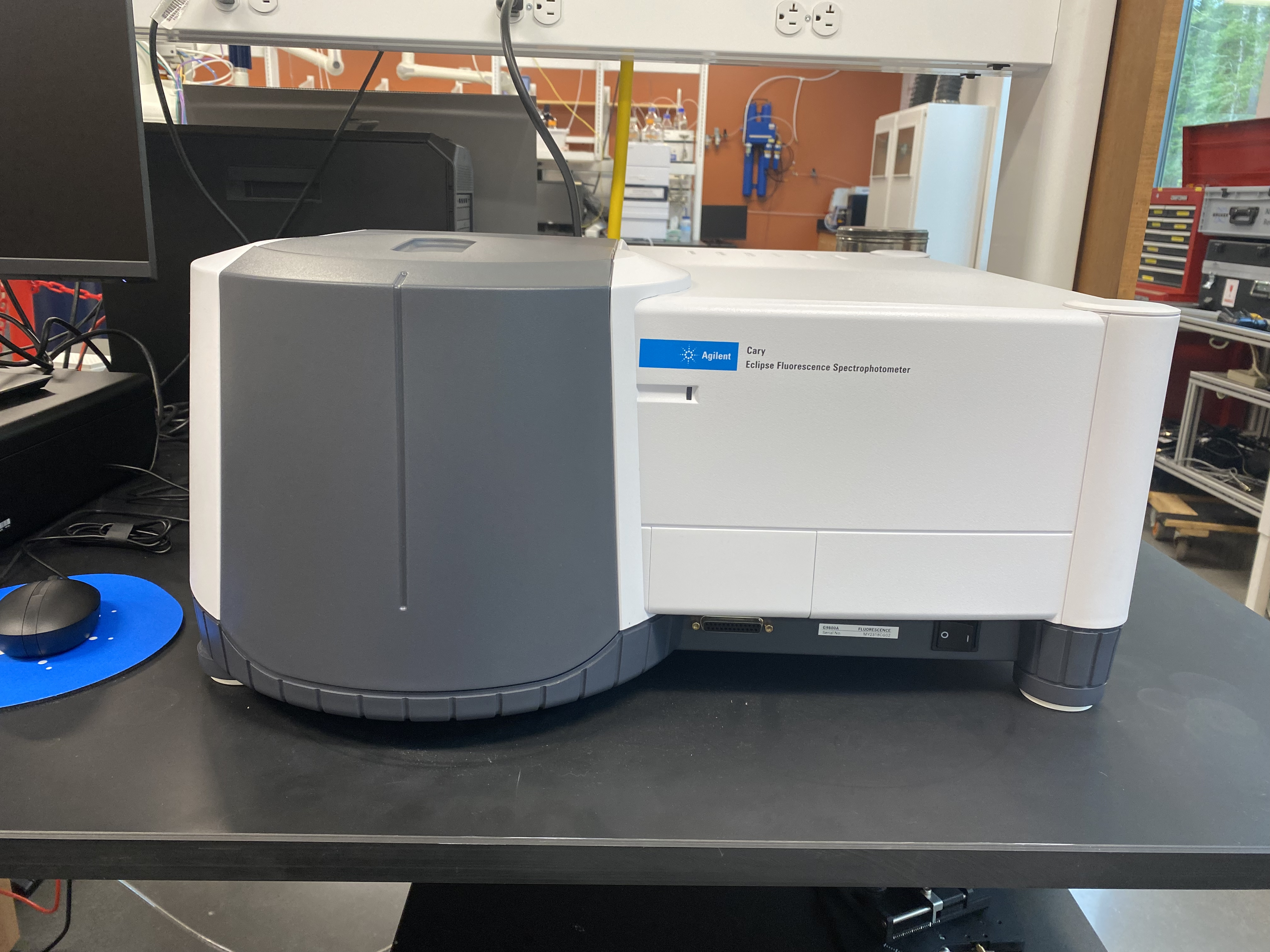
The Agilent Cary Eclipse fluorometer is used to measure steady-state fluorescence, phosphorescence, chemiluminescence and time-resolved phosphorescence
spectra of powders, films and solutions. The system is capable of max scan speed of 24,000 nm/min with a wavelength accuracy of ± 1.5 nm.
Fluorescence Quicklinks:
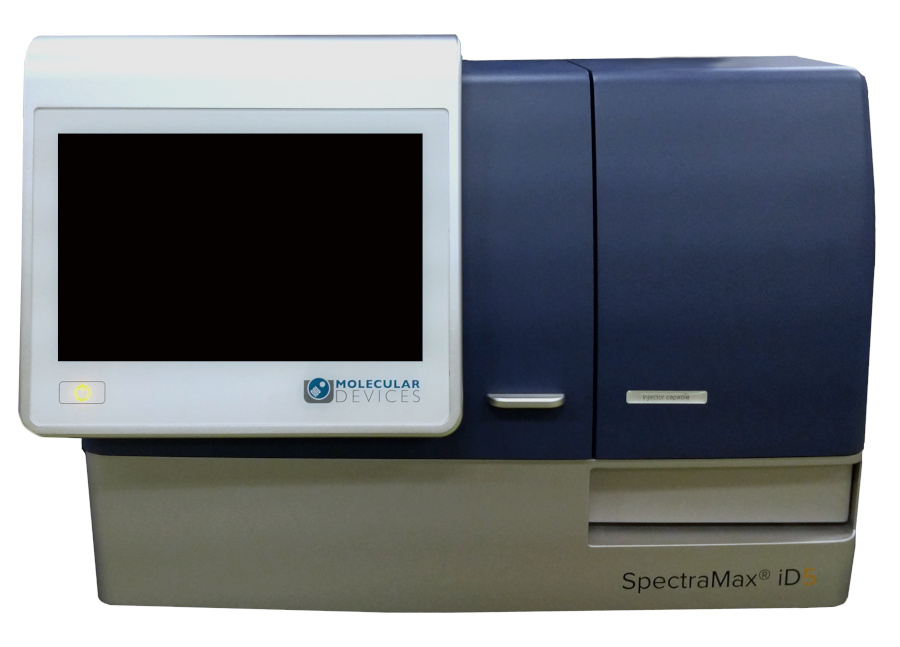
The SpectraMax iD5 multimode microplate reader is capable of conducting fluorescence, absorbance, luminescence, fluorescence polarization, and time-resolved fluorescence on standard microwell plates from 230 - 1000 nm.
The microplate reader was funded through a grant from the North Carolina Biotechnology Center.
Plate Reader Quicklinks:
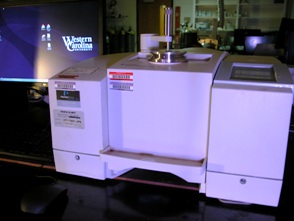
The department maintains several FT-IR instruments including a Smith's Detection FT-IR, a Perkin Elmer SpectrumTwo FT-IR, and a Perkin Elmer SpectrumOne FT-IR. All of these are quipped with a diamond attenuated total reflectance cell (ATR), and the latter two can also be used for traditional transmission FT-IR. The instrument pictured right is a Perkin Elmer SpectrumOne.
The deparment also maintains a Thermo/Nicolet iS10 FT-IR reserved for microscale FT-IR and gas-phase FT-IR (see below).
FT-IR Quicklinks:
Note that the Smith's Detection instrument and the SpectrumTwo are reserved for undergraduate and graduate organic chemistry labs.
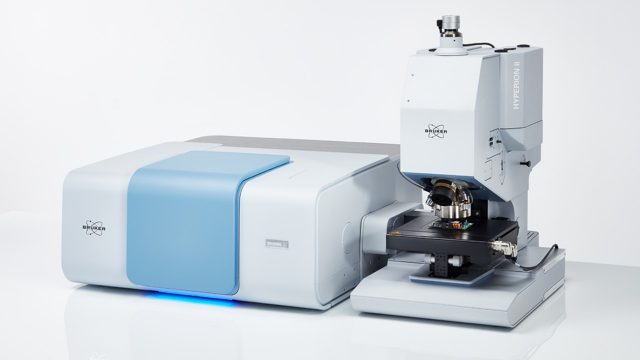
The Bruker INVENIO FT-IR coupled with the Hyperion 3000 microscope is capable of multiple beam path and detector configurations allowing analysis over the entire spectral range from FIR to UV, and fully automated infrared imaging.
The deparment also maintains several general-purpose FT-IRs (see above).
FT-IR Quicklinks:
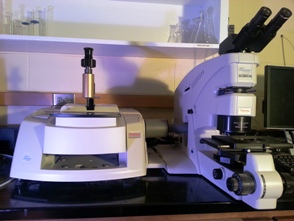
The Thermo/Nicolet iS10 FT-IR is capable of attenuated total reflection (diamond and germanium), transmittance, specular reflectance and diffuse reflectance measurements. It is further equipped with a Centaurs infrared microscope for spatially-resolved infrared measurements and a PIKE heated, stainless steel, short-path gas cell for gas-phase infrared measurments.
The deparment also maintains several general-purpose FT-IRs (see above).
FT-IR Quicklinks:
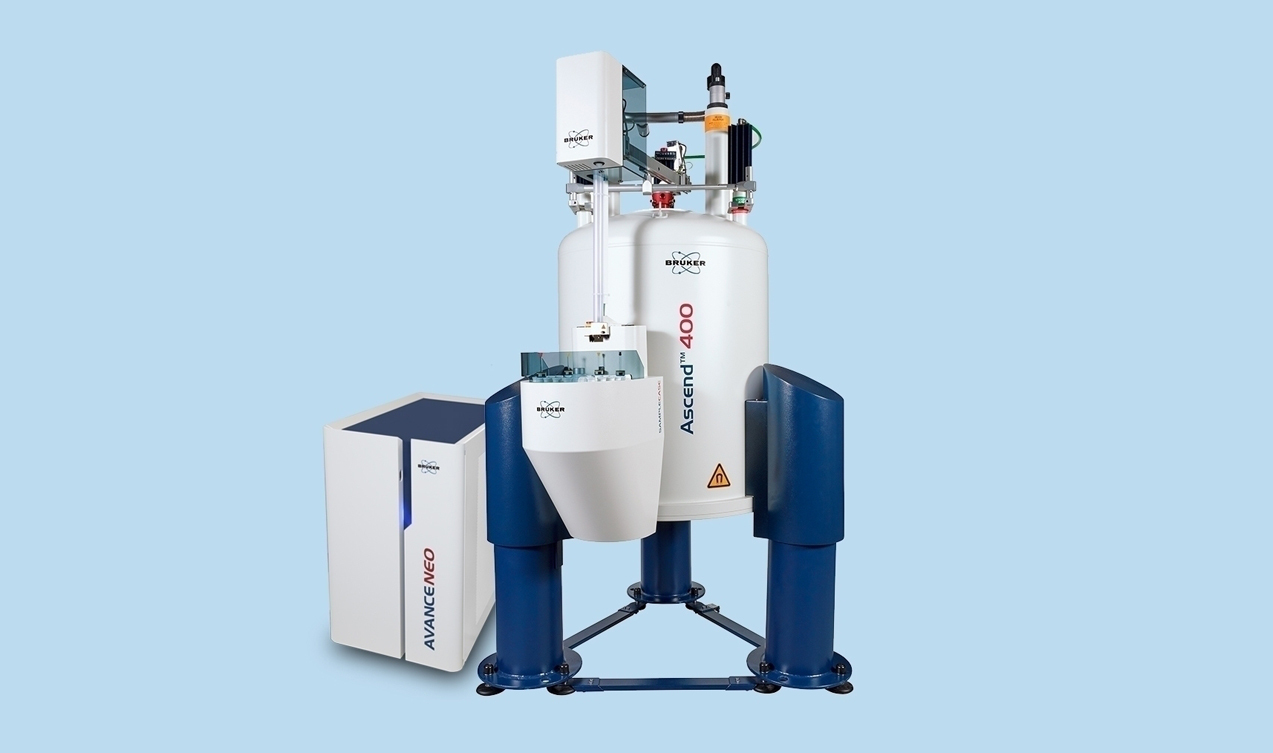
The department maintains a Bruker Ascend 400 MHz (shown right) with a 5-mm tunable probe for detecting nuclei such as 1H, 13C, 19F, and 31P.
We also have two Nanalysis NMReady 60e benchtop NMRs in our organic chemistry teaching lab.
NMR Quicklinks:

The Horiba LabRam HR allows users to perform both macro- and micro-Raman spectroscopy as well as remote Raman spectroscopy via a fiber coupling. With XY step sizes of 0.1µm and Z steps of 0.5µm, the confocal microscope system can collect Raman images with micron resolution. A collection of 4 lasers provide excitation across the visible spectrum.
Raman Quicklinks:
The Raman spectrometer was funded through a grant from the National Science Foundation.
The Agilent Cary 5000 UV-vis-NIR (pictured right) is a monochromated dual-beam UV-visible-NIR spectrometer that provides wavelength coverage from 173 - 3300 nm. The department also houses an Agilent 8453 UV-visible diode array spectrometer and numerouse portable UV-vis instruments used in teaching labs.
UV-Vis Quicklinks:
Chromatography & Mass Spectrometry
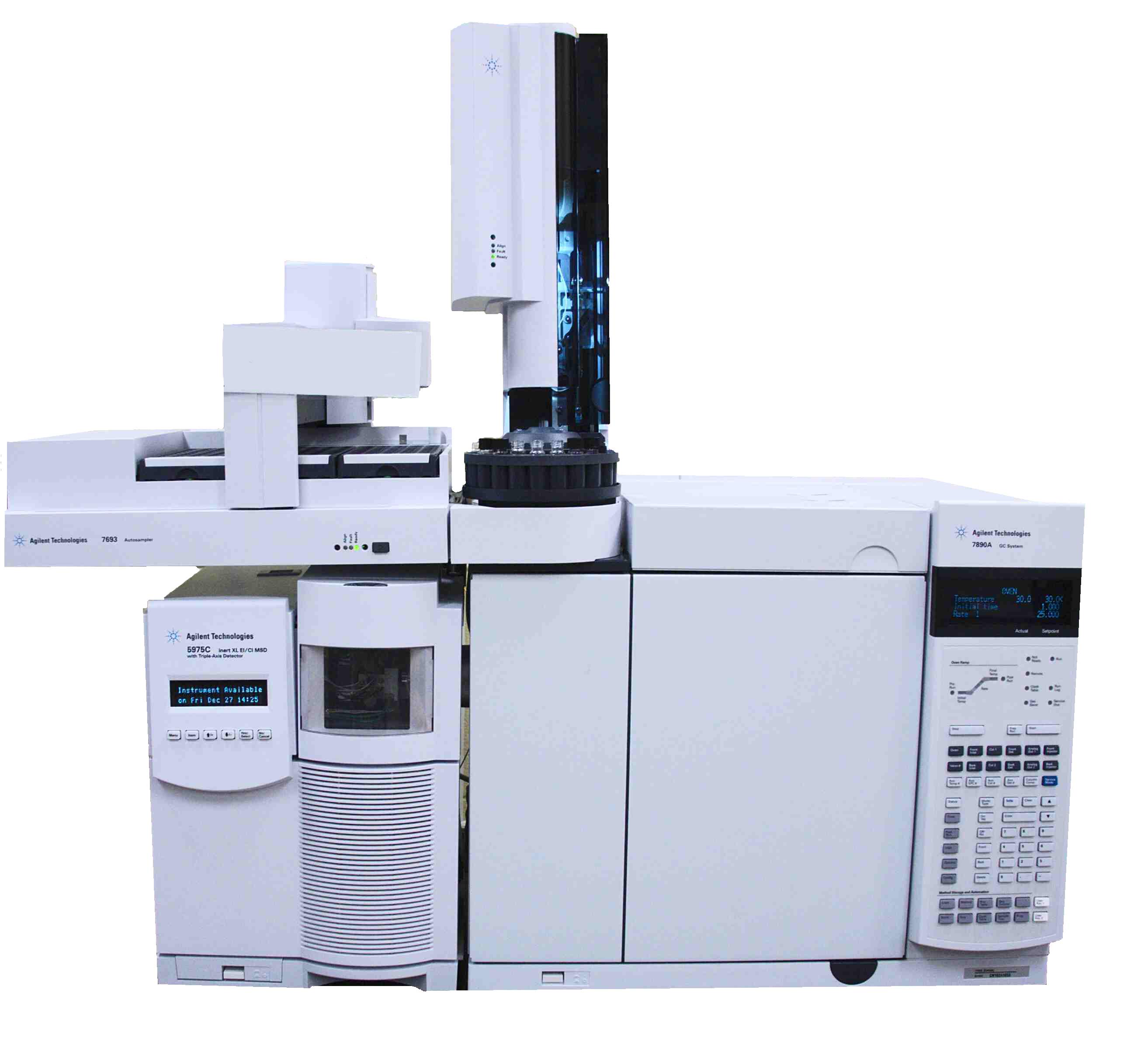
Our Agilent 7890A Gas Chromatograph with 150 position autosampler is coupled to an Agilent 5975C Mass Spectrometer with both electron and chemical ionization. The system is also equipped a flame ionization detector that is inline with a second inlet and column. Lastly, the system includes a Agilent G1888 Headspace Analyzer.
GC-MS Quicklinks:
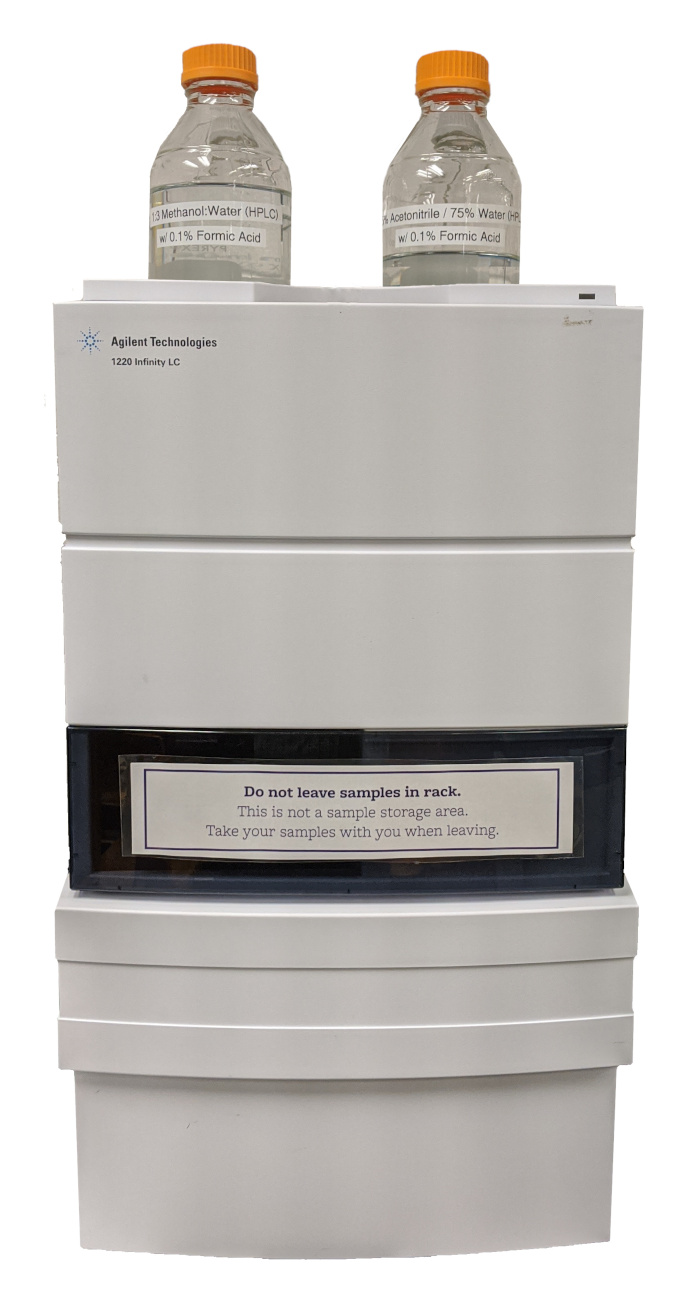
The Agilent 1220LC features a binary gradient pump, 100 position autosampler, and variable wavelength detector.
1220 HPLC Quicklinks:
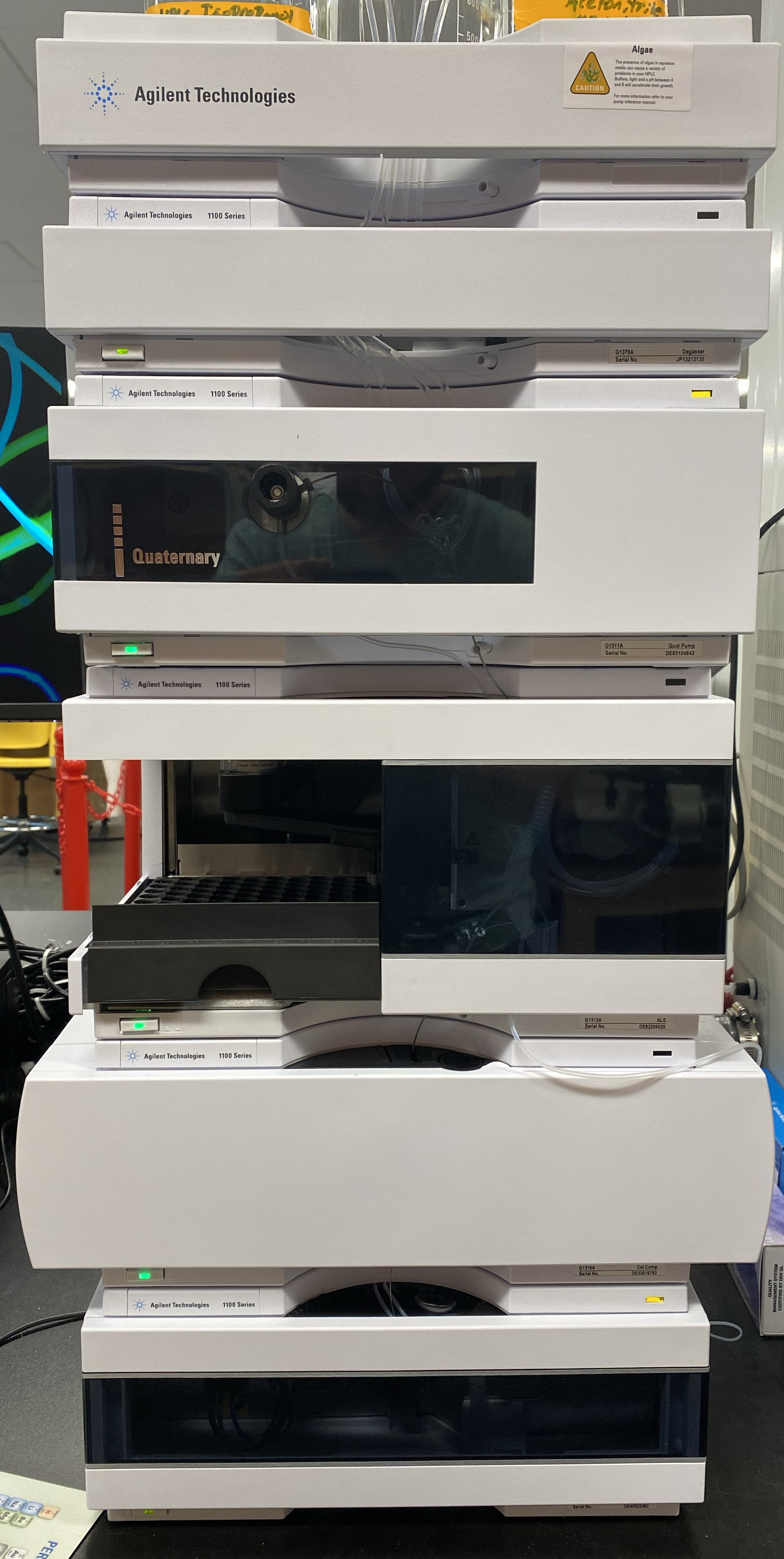
The Agilent 1100LC features a quaternary gradient pump, 100 position autosampler, and diode array detector.
1220 HPLC Quicklinks:
HPLC Quicklinks:
- View the HPLC (U3000) calendar and book time (calendar & computer shared with IC)
The Ultimate 3000 was funded through a grant from the North Carolina Biotechnology Center.

Our Thermo Finnigan LTQ linear ion trap mass spectrometer has both electrospray and atmospheric pressure chemical ionization capabilities as well as an internal collision cell for MS n experiments. Users may either directly inject their sample into the ionization chamber or first separate complex mixtures using the coupled Dionex Ultimate 3000 HPLC with tertiary gradient pump and 400 position autosampler.
LC-MS Quicklinks:
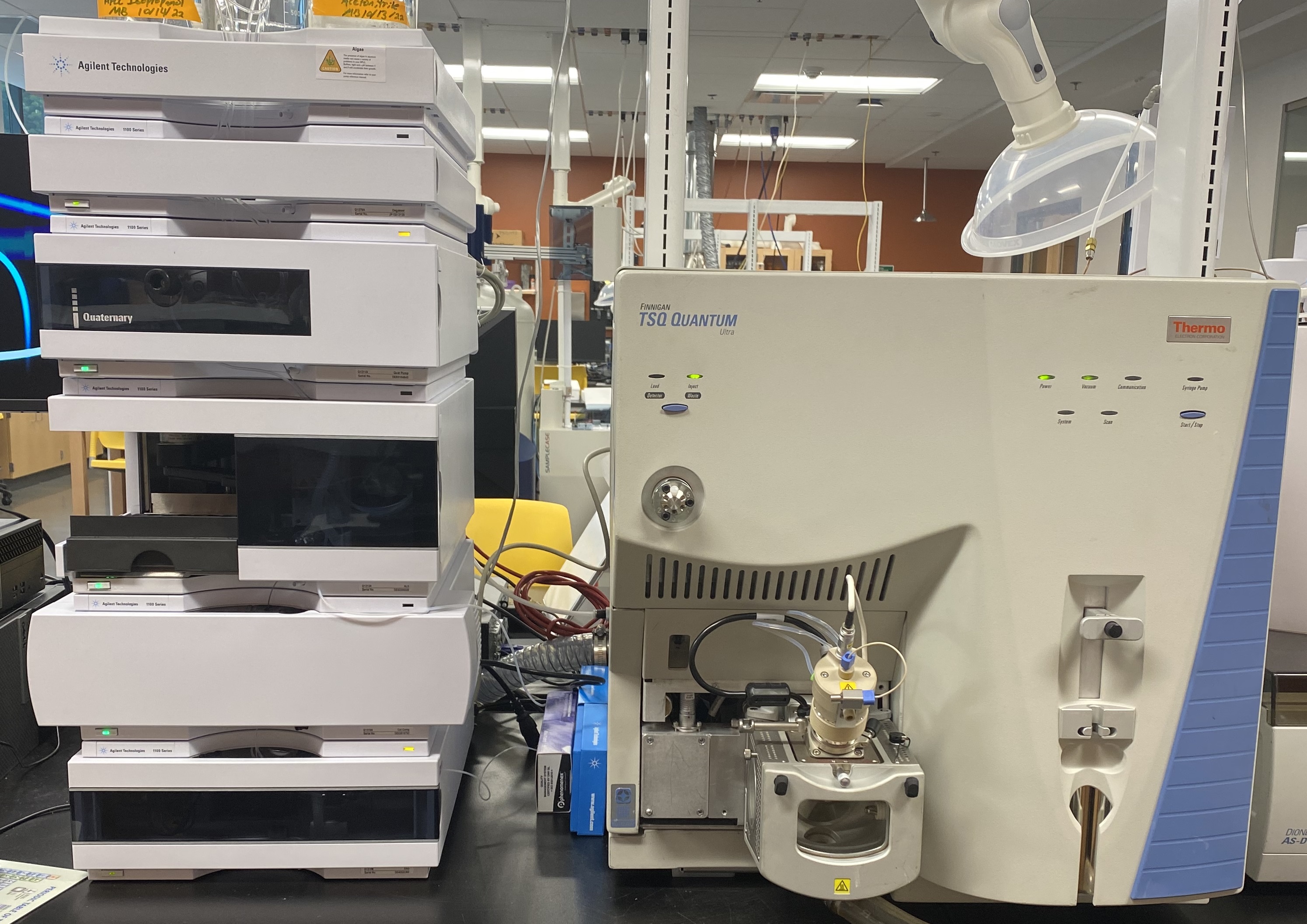
Our Thermo Finnigan TSQ triple quad mass spectrometer has both electrospray and atmospheric pressure chemical ionization capabilities as well as an internal collision cell for MS/MS experiments. Users may either directly inject their sample into the ionization chamber or first separate mixtures using the coupled Agilent 1100 HPLC with quaternary gradient pump, 100 position autosampler and diode array.
LC-MS Quicklinks:
The Dionex ICS-1600 Ion Chromatograph can be used to separate ions in a solution based on their charge. The ICS-1600 is setup to analyze anions.
IC Quicklinks:
Materials Characterization
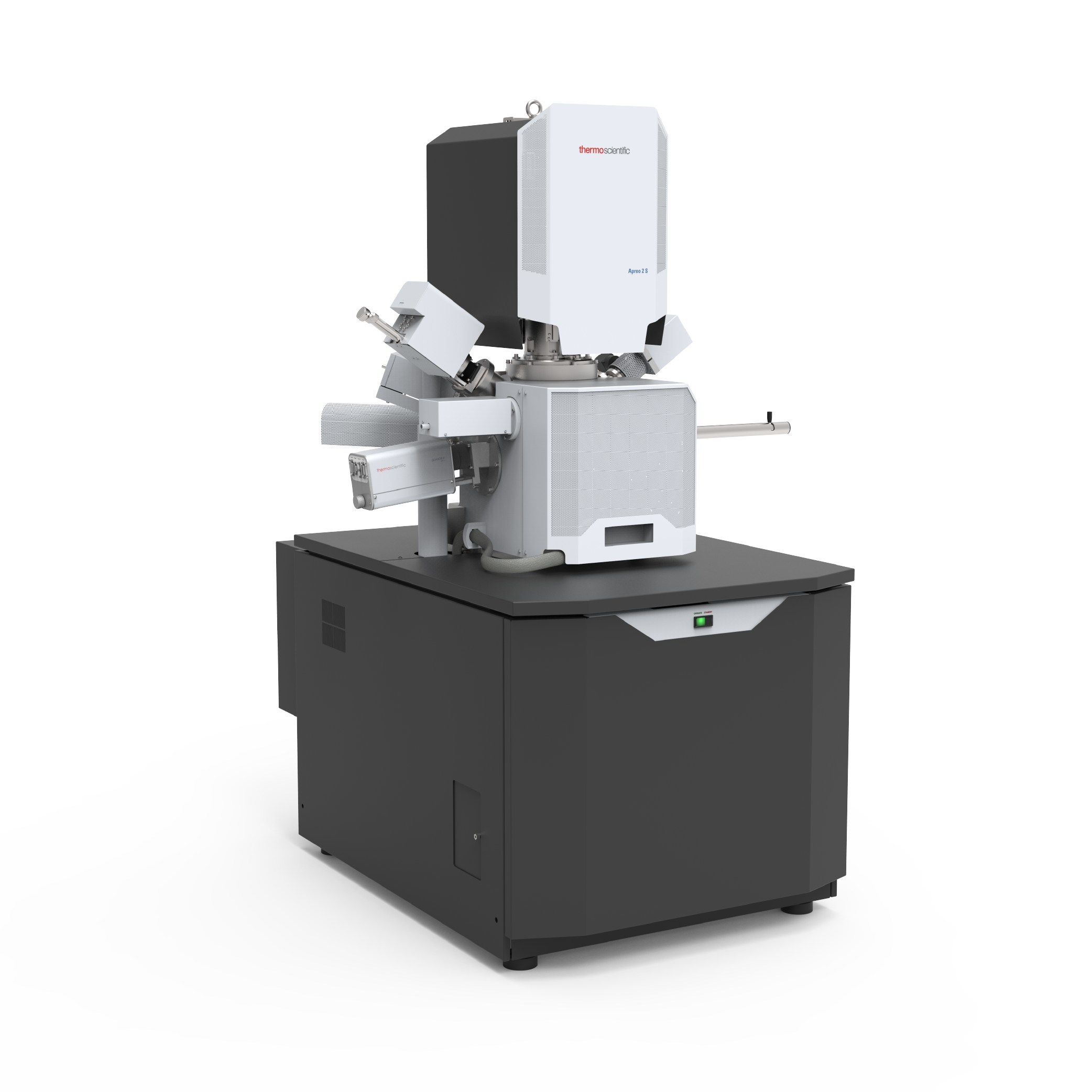
The department maintains a Thermo Fisher Apreo 2 SEM, which has the capability of operating in two vacuum modes to accommodate most samples, low beam voltage and through-lens differential pumping to minimize beam spread. Additionally, the microscope is equipped with Bruker detectors including a Quantax EDS capable of 1,000,000 cps, a Quantax FlatQUAD capable of 1 nm spatial resolution, and a Quantax Micro-XRF with a detection limit of 10 ppm with a 1 nm - 40 µm layer thickness range. For samples prone to charging, the department also houses a Leica ACE600 HV carbon coater and metal sputtering system.
SEM Quicklinks:
The department maintains a Malvern Zetasizer Nano ZS, which utilizes a 633 nm HeNe laser to measure the optical properties of suspensions. This instrument can be used to measure Particle size, Molecular weight, and Zeta potential.
DLS Quicklinks:
The Zetasizer was funded through a grant from the North Carolina Biotechnology Center.
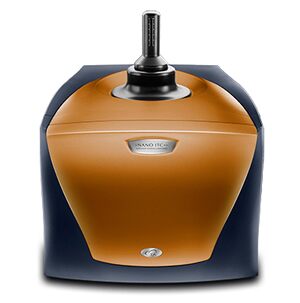
The TA Instruments Nano ITC is designed to provide maximum sensitivity and flexibility for the study of biomolecular binding.
ITC Quicklinks:
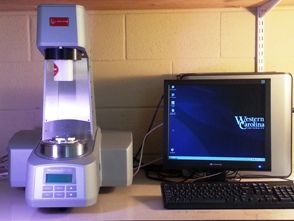
The Anton Paar Physica MCR101 Rheometer can be used for shear-type rheometry in both rotational and oscillation modes.
Rheometer Quicklinks:
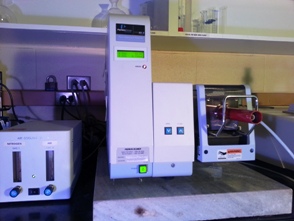
The Perkin Elmer Diamond TG-DTA can be used to perform both thermogravimetric analysis as well as record temperature differences between a sample and standard in a technique similar to differential scanning calorimetry.
TG-DTA Quicklinks:
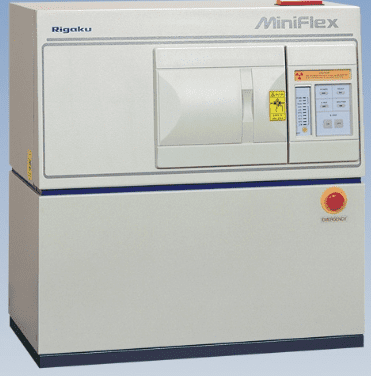
The Rigaku Miniflex Benchtop X-ray Diffraction Instrument can be used to obtain X-ray diffraction spectra on powdered samples.
TG-DTA Quicklinks:
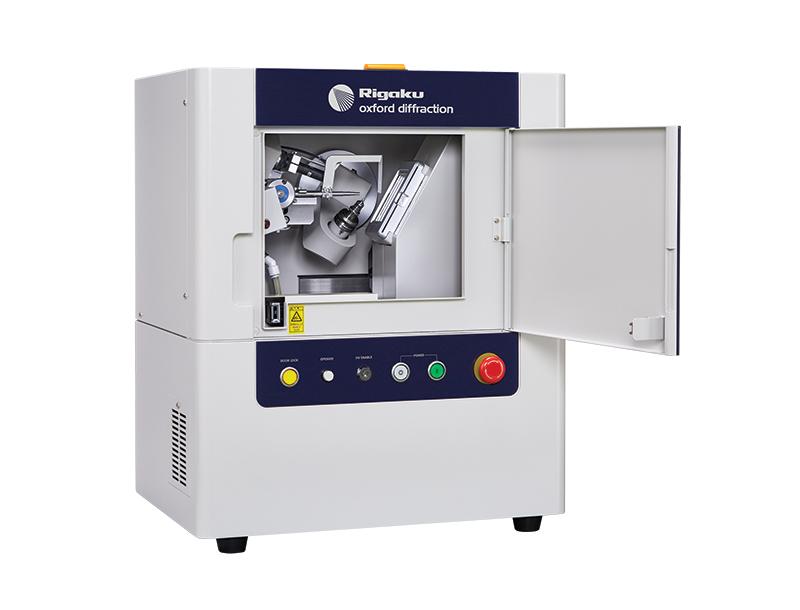
The Rigaku XtaLAB Mini II single-crystal X-ray Diffraction instrument can be used to obtain X-ray diffraction spectra on single crystals.es.
TG-DTA Quicklinks:
Electrochemistry
The Gamry 1010E potentiostat allows for cyclic voltammetry, linear sweep voltammetry, thin-film deposition, trace metals quantification, and much more. It is equipped with Dr. Bob's jacketed cell, an assortment of working, reference, and counter electrodes, and a spectroelectrochemical cell.
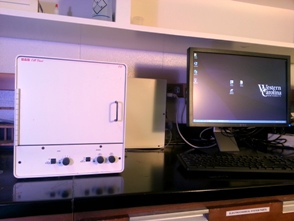
The BASi CV-50W is a voltammetric analyzer equipped with an assortment of electrodes and a completely shielded experiment stage.
The Standford Research Systems QCM200 allows for measurement of deposited mass during electrochemical experiments. It can also be used to determine the viscosity of liquids.
Additional Equipment
The department has a Parr 1241 bomb calorimeter for measuring the heat of combustion of reactions.

The department has two Beckman Coulter centrifuges and a Sorvall centrifuge, in addition to centrifuges maintained by individual research labs in Chemistry and Biology. Additionally, a Thermo Fisher centrifuge is available in AP429 when booked accordingly.
The department has a Labconco lyophilizer for freeze drying of samples.
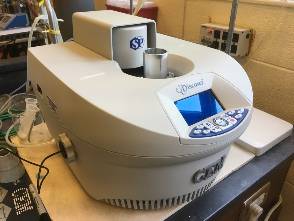
The department houses a CEM Discover SP microwave synthesizer and a CEM Mars microwave synthesizer for microwave heating of reactions.
The deparment has two Fisher Scientific Isotemp programmable muffle furnaces that can be used to heat samples up to 1125°C.
